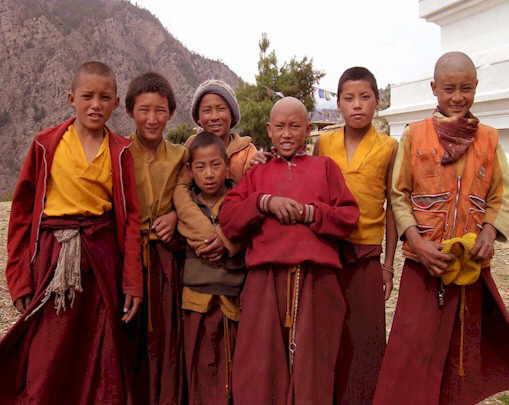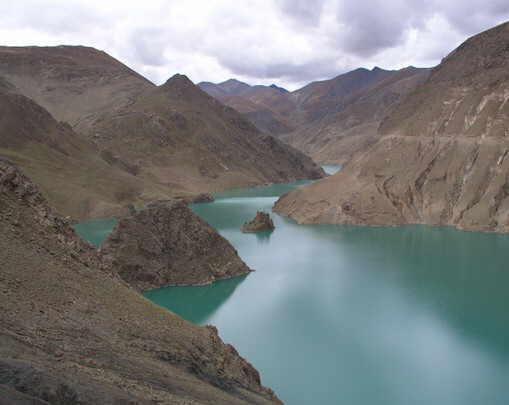Day-1: Kathmandu
Day-2: Kathmandu
Day-3: Kathmandu to Lhasa (3660m)
Day-4: Lhasa
Day-5: Lhasa
Day-6: Lhasa to Gyantse (3950m)
Day-7: Gyantse (3950m) to Shigatse (3900m)
Day-8: Shigatse to Shegar (4050m)
Day-8: Shigatse to Shegar (4050m)
Day-9: Shegar to Rongbuk (5000m)
Day-10: Drive Rongbuk - Nyalam
Day-11: Drive Nyalam - Kathmandu
Day-12: Leisure.
Day-13
Final Departure.
End of services
Day-1: Arrive Kathmandu and transfer to Hotel.
Day-2: Full day Guided sightseeing around Kathmandu valley.

Day-3. Kathmandu to Lhasa (3660m)
Transfer to the airport for the hour-long flight across the main Himalayan range. Afternoon at rest to acclimatise to Lhasa' s high altitude.
Day-4: Lhasa
We will visit Lhasa' s many monasteries and sites, such as the Sera Monastery, and the Norbulingka, the summer palace of the Dalai Lama.
Day-5: Lhasa
We visit the Potala Palace and Drepung Monastery founded in the 14th century, and once the largest in the world, with a population of around 10,000 monks. The afternoon, is a time to relax or further explore the area.
Day-6: Lhasa to Gyantse (3950m)
Travelling by jeep along the Friendship Highway we cross the Khamba La (4794m) and continue westwards over another high pass the Karo La (5045m) with incredible glacial views. We spend the night in a Hotel at Gyantse. [261km]
Day-7: Gyantse to Shigatse (3900m)
After an early morning tour of some of the Gyantse Dzong (14th Century fort) and the Kumbum, a large stupa, we head off on a short 90km drive to Shigatse, the second largest city in Tibet. In the afternoon we will explore the area, local monasteries and market. Overnight at the Hotel. [90km]

Day-8: Shigatse to Shegar (4050m)
We continue along the Friendship Highway, marveling once more at the barren yet spectacular landscape of Tibet. Beyond the town of Lhatse we cross the highest pass on our journey, the Gyamtso La [5220m]. From here we descend to the plains en route to Shegar and overnight at Hotel Quomolongma.[244km]
Day-9: Shegar to Rongbuk
On our travels, we are rewarded with uninterrupted views stretching from Makalu to Shishapangma, with clear views of Everest as we turn into the Rongbuk Valley. Overnight Guest House.(68km)
Day-10: Drive Rongbuk - Old Tingri
After arriving back at Rongbuk, we begin our drive towards Old Tingri, cross another two high passes, and begin our descent from the Tibetan Plateau to Nyalam just 30 km before the Nepalese border. [215km]
Day-11: Drive Old Tingri - Kyirong County
(270 kms / 5.5 hrs. Guest House.
Day-12: Cross the border (Kerung) and drive to Kathmandu
Today we say goodbye to the Tibetan guide and driver and walk to Nepalese Immigration Control in Kerung where our Nepalese staff will meet us. After completing the re-entry formalities we continue the drive to Kathmandu, which, depending on road and weather conditions, should take about 8-9 hours. Hotel Overnight.
Day-12: Today at leisure.
Day-13: Final Departure.
End of services